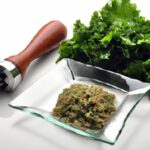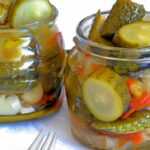In a world where culinary creativity flows as freely as a fine vintage, there exists a charming twist on an old favorite-non-alcoholic wine jelly. Imagine capturing the essence of a rich, velvety red or a crisp, aromatic white grape in a jewel-toned spread that dances on your palate without a trace of alcohol. “Crafting Delight: A Guide to Non-Alcoholic Wine Jelly” invites you on a sensory journey where tradition meets innovation, transforming humble ingredients into a gourmet treat perfect for any occasion. Whether you’re a seasoned cook looking to expand your repertoire or simply curious about the magic behind this unique delicacy, this guide will unravel the secrets to creating wine jelly that captivates both taste buds and imagination. Let’s uncork the possibilities and savor the art of crafting delight-one spoonful at a time.
Crafting Delight: A Guide to Non-Alcoholic Wine Jelly
Crafting delight in your kitchen begins with exploring the beautiful harmony that non-alcoholic wines offer when transformed into luscious, vibrant jelly. This unique culinary adventure marries the delicate fruity notes and crisp acidity of non-alcoholic wines with the silky texture and sweetness perfect for an irresistible jelly. Whether you’re looking for an elegant spread or a sophisticated addition to your dessert repertoire, wine jelly elevates flavors with every spoonful.
Prep and Cook Time
Preparation: 10 minutes
Cooking: 20 minutes
Cooling & Setting: 3-4 hours
Yield
About 4 half-cup jars (approximately 2 cups total jelly)
Difficulty Level
Easy – Ideal for beginner to intermediate jelly makers looking to explore innovative flavors
Ingredients
- 2 cups non-alcoholic wine (choose a vibrant rosé or white, preferably semi-sweet for balanced flavor)
- 1 ¾ cups granulated sugar
- 1 package (1.75 oz) fruit pectin (preferably low-sugar or no-cook pectin for better texture)
- 2 tablespoons lemon juice (freshly squeezed for brightness and natural acidity)
- Optional: 1 teaspoon finely grated lemon zest or a pinch of crushed pink peppercorns (for a spicy aromatic twist)
Instructions
- Prepare your jars and utensils: Sterilize jars by boiling or running them through a dishwasher cycle. Set aside heart of the non-alcoholic wine for tasting and seasoning at the end.
- Combine wine and pectin: In a medium saucepan, whisk the non-alcoholic wine and fruit pectin thoroughly to avoid clumps. Bring to a gentle boil over medium heat, stirring constantly to prevent scorching.
- Add sugar gradually: Slowly sprinkle in the granulated sugar while whisking vigorously. This ensures a smooth jelly base. Return mixture to a strong boil for exactly 1 minute; timing is crucial to activate the pectin for perfect setting.
- Incorporate acidity: Stir in the freshly squeezed lemon juice and optional lemon zest or pink peppercorns. The acid balance enhances natural wine flavors and improves jelly firmness.
- Test the gel: Remove from heat and ladle a small spoonful onto a cold plate. Let sit for 1-2 minutes, then push gently with your finger-if it wrinkles, it’s ready. If not, return to a boil for an additional 30 seconds and test again.
- Jar the jelly: Pour the hot jelly into sterilized jars, leaving ¼ inch headspace. Wipe rims clean and seal with lids immediately.
- Cool and set: Allow jars to cool at room temperature, then refrigerate or process in a hot water bath if storing long-term. Jelly fully sets within 3-4 hours and develops deeper flavor when rested overnight.
Tips for Success
- Choosing the perfect wine: Select a non-alcoholic wine with pronounced fruit notes such as berry or citrus undertones to add complexity to your jelly.
- Balancing sweetness: Start with less sugar if your wine is naturally sweet, adjusting after tasting the warm jelly base.
- Pectin types: Low-sugar pectin yields a firmer set with less sugar; no-cook pectin simplifies the process and retains vibrant wine aromas.
- Storage: Refrigerate opened jelly and consume within 3 weeks for optimal freshness. Unopened, jars remain shelf-stable for up to 12 months when processed correctly.
- Make ahead: Jelly strengthens in flavor over 2-3 days in the fridge and is ideal for holiday gifting or surprise brunch treats.
Creative Pairings and Serving Suggestions
Elevate your wine jelly experience by pairing it thoughtfully. Spread a thin layer atop freshly toasted brioche or buttery croissants for breakfast luxuries. Use it as a glaze on roasted poultry or pork, infusing a subtle fruity tang. Combine with cream cheeses or goat cheese on a charcuterie board for an elegant contrast of flavors and textures.
Garnish with fresh herbs like thyme or rosemary sprigs, or sprinkle edible flowers for a visual flourish. For dessert, dollop over panna cotta or swirl into vanilla yogurt to create a jewel-toned finish that pleases both the eye and palate.
| Nutritional Information (per 2 tbsp) | Calories | Protein (g) | Carbs (g) | Fat (g) |
|---|---|---|---|---|
| Wine Jelly | 60 | 0 | 15 | 0 |
For more creative jelly recipes and culinary ideas, explore our fruit preserves guide. Discover the science behind pectin and setting jelly at University of Minnesota Extension on Jelly Making.

Q&A
Q&A: Crafting Delight – A Guide to Non-Alcoholic Wine Jelly
Q1: What makes non-alcoholic wine jelly different from regular jelly?
A1: Unlike traditional jelly that often uses fruit juices or flavored syrups, non-alcoholic wine jelly captures the sophisticated, nuanced flavors of wine-without the alcohol. This transforms an everyday jelly into a gourmet spread that marries the subtle tannins and fruity notes of wine with the comforting, jiggly sweetness of jelly.
Q2: Can you use any type of non-alcoholic wine to make wine jelly?
A2: Absolutely! From crisp whites to rich reds and even sparkling varieties, the choice of non-alcoholic wine directly influences the color, aroma, and flavor profile of your jelly. Experimenting with different grapes and styles can yield delightful surprises, making each batch uniquely yours.
Q3: How do you ensure the jelly sets properly using non-alcoholic wine?
A3: Achieving the perfect set comes down to balancing pectin, sugar, and acidity. Since wine brings its own natural acidity and subtle sweetness, adjusting these ingredients carefully is key. Using a quality fruit pectin and following the recipe’s measurements closely will help your jelly set firm yet tender.
Q4: What are some gourmet pairings for non-alcoholic wine jelly?
A4: This jelly shines on a crusty baguette with creamy cheeses like brie or goat cheese. It also pairs beautifully with roasted meats, charcuterie boards, or as a glaze for vegetables. Its elegant flavor elevates both sweet and savory dishes-perfect for entertaining or a simple indulgence.
Q5: Is non-alcoholic wine jelly suitable for all diets?
A5: Yes! Since the jelly is alcohol-free, it suits those avoiding alcohol for health or personal reasons. It can also be made vegan by ensuring the pectin used is plant-based. Plus, homemade versions let you control sugar levels to better fit dietary needs.
Q6: How long does non-alcoholic wine jelly last, and how should it be stored?
A6: Properly canned and sealed, wine jelly can last up to a year in a cool, dark pantry. Once opened, store it in the refrigerator and enjoy within a few weeks. Its vibrant flavor and texture remain best when preserved carefully.
Q7: What creative twists can you add to standard non-alcoholic wine jelly recipes?
A7: Infuse your jelly with herbs like rosemary or thyme for an aromatic edge, or add citrus zest for a bright pop. Incorporating berries or flowers such as elderflower can add complexity and color. The canvas is yours-let imagination stir the pot!
Wrapping Up
As you embark on your journey of crafting non-alcoholic wine jelly, remember that this delightful creation is more than just a preserve-it’s a celebration of flavor, tradition, and creativity all rolled into one vibrant jar. Whether enjoyed as a spread, a glaze, or a unique gift, your homemade wine jelly invites moments of indulgence without the need for alcohol. Armed with this guide, you’re ready to transform simple ingredients into a sophisticated treat that delights the palate and sparks conversation. So, roll up your sleeves, embrace the art of jelly-making, and let each batch be a testament to the joy found in crafting something truly special-one spoonful at a time.


